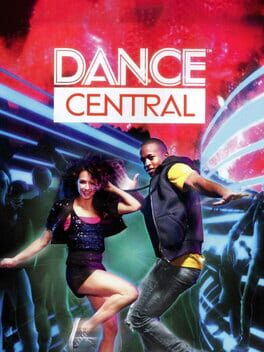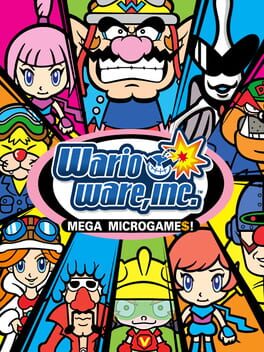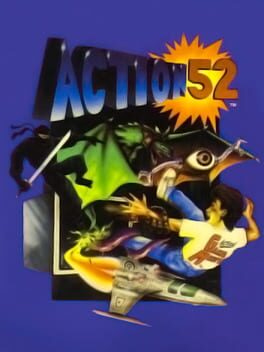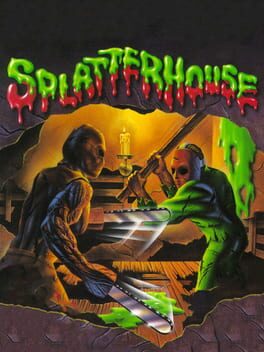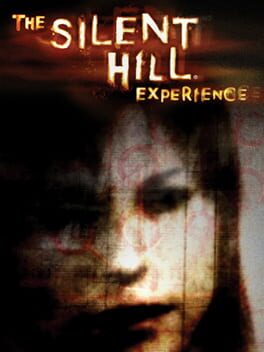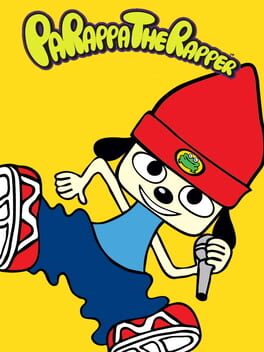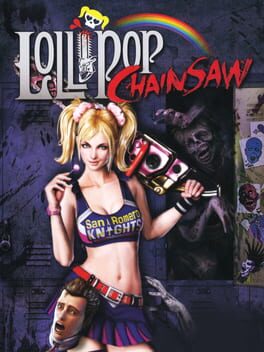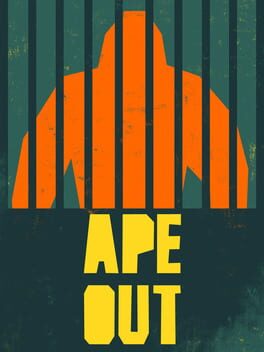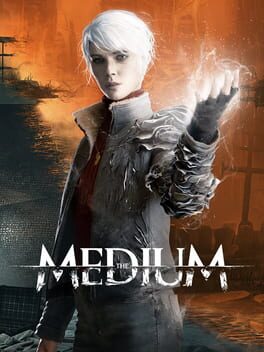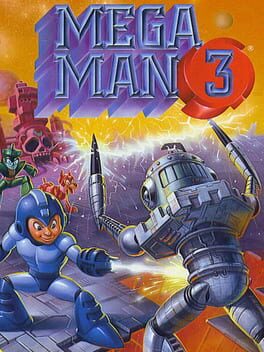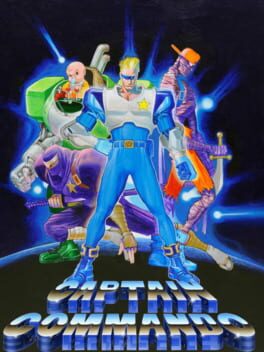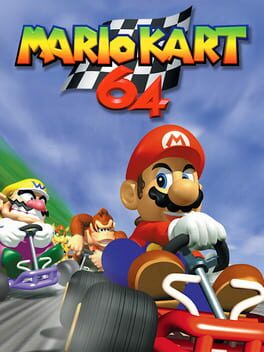2010
Harmonix already showed the most enjoyable and simplistic way to enjoy rhythm gaming with the Guitar Hero and Rock Band series, that--in a sense--imitated the motions and actions it took for its respective musician. Dance Central is a very obvious evolution to that.
In a world where the concept of dancing games were already popularized through Dance Dance Revolution (which wasn't really dancing, just hitting notes rhythmically with your feet/fingers) and Just Dance (which has no real guide or real restrictions), Dance Central would be the Kinect game that felt like it utilized this new peripheral best by actually teaching the players choreographed dance moves.
From what I understand, this was the first dancing game that actually required the player to get the moves and motions right to real dance moves. The que cards on the side instruct the player how to move--sometimes with not enough information--and stay on-rhythm. While some of it may look silly when you're pulling off these moves on your own, much of it is practiced in large groups of choreography dancers, where it's much more appropriate.
I'm not saying Dance Central will teach you how to become the life of the party at that wedding reception you're going to, but it gives you a good idea what it takes to bust a move. It's also a fun way to get some exercise. I always found the easiest way to get to working out for the uninitiated is to add a game-like score to it. The only shortcomings are the mandatory "free moves" segments that are in every song, and the fact that it isn't 2 players.
In a world where the concept of dancing games were already popularized through Dance Dance Revolution (which wasn't really dancing, just hitting notes rhythmically with your feet/fingers) and Just Dance (which has no real guide or real restrictions), Dance Central would be the Kinect game that felt like it utilized this new peripheral best by actually teaching the players choreographed dance moves.
From what I understand, this was the first dancing game that actually required the player to get the moves and motions right to real dance moves. The que cards on the side instruct the player how to move--sometimes with not enough information--and stay on-rhythm. While some of it may look silly when you're pulling off these moves on your own, much of it is practiced in large groups of choreography dancers, where it's much more appropriate.
I'm not saying Dance Central will teach you how to become the life of the party at that wedding reception you're going to, but it gives you a good idea what it takes to bust a move. It's also a fun way to get some exercise. I always found the easiest way to get to working out for the uninitiated is to add a game-like score to it. The only shortcomings are the mandatory "free moves" segments that are in every song, and the fact that it isn't 2 players.
A game that could've only come from the mind of a seasoned developer that understands how much is put into making video games, and those that try to capitalize off of it. WarioWare Inc is so damn delightful from beginning to end, and boasts an amazing array of characters that are all charming and unique in their own way!
It's hard to even describe what this game is going for, but it's funny looking at it nearly 20 years later and seeing how much it resembles indie games that would come many years afterward! And seeing just how enriched this world of WarioWare was with each individual micro-game sporting its own style is also pretty amazing.
This is Video Games: The Game™
It's hard to even describe what this game is going for, but it's funny looking at it nearly 20 years later and seeing how much it resembles indie games that would come many years afterward! And seeing just how enriched this world of WarioWare was with each individual micro-game sporting its own style is also pretty amazing.
This is Video Games: The Game™
1991
1988
As far as simple arcade games go, people will be typically turned off by Splatterhouse due to its heavy controls and demand for raw inputs. I, however, adore the way this game feels, every single landing attack feels damn good, and the methods you can achieve for quick kills are gratifying. While it is a severely punishing game, it feels right in this world where you're this big brute trying to save his girlfriend from an off-the-walls haunted mansion!
I also can't emphasize enough how much I adore the presentation. So many homages to classic and contemporary horror films from beginning to end, and the unapologetic, gorey nature of the visuals and animation. This concept of "Japanese devs being inspired by a bunch of Western horror movies" is mostly lost these days, but it's a flavor I simply can NEVER get enough of. And Splatterhouse oozes with this vibe from beginning to end.
I also can't emphasize enough how much I adore the presentation. So many homages to classic and contemporary horror films from beginning to end, and the unapologetic, gorey nature of the visuals and animation. This concept of "Japanese devs being inspired by a bunch of Western horror movies" is mostly lost these days, but it's a flavor I simply can NEVER get enough of. And Splatterhouse oozes with this vibe from beginning to end.
A very genuine--albeit vanilla--love letter to the Batman franchise. Batman: Arkham Asylum marks the first time a game company successfully blends two (of three) Batman's main aspects of crime-fighting. Stealth, and hand-to-hand combat (implementing actual detective work that meant more than using a visual filter would be something explored more thoroughly in the sequels).
The story itself is fairly strong, and offers some great moments that rivals other Batman-related media, a particular highlight would be the hallucination segments when confronting The Scarecrow. The rogue gallery first featured in this game are also a delight and bare designs that aren't ashamed of its over-the-top comic book origins. Most notably Bane and Killer Croc (might be a weird thing to harp about, but seeing later DC-related games merely try to ape the live action films' designs is depressing to think about).
The combat is pretty simple as far as brawlers go, but the way it's designed emphasizes how much you have to get through confrontations relatively unscathed, as enemies can bombard you pretty easily, but it just takes focus, positioning, and decent reaction-time to overcome. The game somewhat rewards you for being stylish with your attacks, as it grants more upgrade points, thus unlocking your full potential sooner. Stealth maps are also fun as they can sometimes let you be creative at how aggressive or discreet you can be.
Speaking more on comic-like visuals, I love the HUD and menus. All these blank white canvases covered in a heavy-black imagery of Batman, and all the character profile portraits drawn by David Hego were fantastic as well. I love how they provided homages to nearly all of Batman's villains, and scanning them provided full character profiles complete with a beautifully detailed drawing. This emphasizes how much this was a love letter to the franchise, and perhaps they thought they should give these characters some love since Rocksteady likely had no idea how well the game would sell.
Topped off with a Metroid-like world design, this newly-pillaged Arkham Asylum is really fun to explore and find all of its secrets! There are certain aspects the sequels would manage to improve upon, but as a pure Batman game, I don't think this series ever reached the peak that was the beginning.
The story itself is fairly strong, and offers some great moments that rivals other Batman-related media, a particular highlight would be the hallucination segments when confronting The Scarecrow. The rogue gallery first featured in this game are also a delight and bare designs that aren't ashamed of its over-the-top comic book origins. Most notably Bane and Killer Croc (might be a weird thing to harp about, but seeing later DC-related games merely try to ape the live action films' designs is depressing to think about).
The combat is pretty simple as far as brawlers go, but the way it's designed emphasizes how much you have to get through confrontations relatively unscathed, as enemies can bombard you pretty easily, but it just takes focus, positioning, and decent reaction-time to overcome. The game somewhat rewards you for being stylish with your attacks, as it grants more upgrade points, thus unlocking your full potential sooner. Stealth maps are also fun as they can sometimes let you be creative at how aggressive or discreet you can be.
Speaking more on comic-like visuals, I love the HUD and menus. All these blank white canvases covered in a heavy-black imagery of Batman, and all the character profile portraits drawn by David Hego were fantastic as well. I love how they provided homages to nearly all of Batman's villains, and scanning them provided full character profiles complete with a beautifully detailed drawing. This emphasizes how much this was a love letter to the franchise, and perhaps they thought they should give these characters some love since Rocksteady likely had no idea how well the game would sell.
Topped off with a Metroid-like world design, this newly-pillaged Arkham Asylum is really fun to explore and find all of its secrets! There are certain aspects the sequels would manage to improve upon, but as a pure Batman game, I don't think this series ever reached the peak that was the beginning.
1996
A rhythm game that's as cute as it is frustrating. I've never really researched the game's design, but I can't help but concur with people that claim the game literally punishes you for being "too" on-rhythm with the inputs. And I'm talking old-school PS1 on a CRT where there was no input lag!
Still, the art style is absolutely delightful, and the tunes are beyond catchy, it's not much a secret why this charming little piece you can beat in under an hour is considered a Playstation classic!
Still, the art style is absolutely delightful, and the tunes are beyond catchy, it's not much a secret why this charming little piece you can beat in under an hour is considered a Playstation classic!
2012
A hack-n-slash game that emphasizes on the hacking, which I find appropriate, considering an oversized chainsaw is the primary weapon. Lollipop Chainsaw is a cheeky action game that's humorous and creative in its own fun ways, but leans a bit too heavily on references in lieu of clever comedy. Not that the game isn't funny at times. The gameplay itself is a bit monotonous as well, rarely will it ask you to be strategic with your ways of attacking, and their way of congratulating the player with multi-kills really start to feel like punishment when you've refined your methods to group-up and kill.
The game has plenty of highlights too, I adore the concept of the zombies not just being able to talk, but also talk shit. A lot of their weird little lines and cadence are a delight. The music is also pretty fantastic, specifically the non-licensed tracks. Akira Yamaoka did a fine job providing more of this whacky punk atmosphere, and Jimmy Urine's boss tracks stand out the most, as they should.
Even so, it's a repetitive game that doesn't do a lot asking for replays. The most interesting thing about this game, to me, is seeing it in the lens of sexism. I personally think this game is trying to say some curious things about sexist roles in fantasy. The fact that the roles between the main male and female characters have been reversed from its norm (Nick literally becoming an "object" that's mocked and ogled for his appearance) says plenty, and I like how Juliet isn't exactly a perfect character either, showing her flaws throughout the game.
In other words, Lollipop Chainsaw is a good example of bait-n-switch in the world of power fantasies, but I think the eye candy is a little too in-your-face that I don't blame people for not seeing the game in the same light as I do.
The game has plenty of highlights too, I adore the concept of the zombies not just being able to talk, but also talk shit. A lot of their weird little lines and cadence are a delight. The music is also pretty fantastic, specifically the non-licensed tracks. Akira Yamaoka did a fine job providing more of this whacky punk atmosphere, and Jimmy Urine's boss tracks stand out the most, as they should.
Even so, it's a repetitive game that doesn't do a lot asking for replays. The most interesting thing about this game, to me, is seeing it in the lens of sexism. I personally think this game is trying to say some curious things about sexist roles in fantasy. The fact that the roles between the main male and female characters have been reversed from its norm (Nick literally becoming an "object" that's mocked and ogled for his appearance) says plenty, and I like how Juliet isn't exactly a perfect character either, showing her flaws throughout the game.
In other words, Lollipop Chainsaw is a good example of bait-n-switch in the world of power fantasies, but I think the eye candy is a little too in-your-face that I don't blame people for not seeing the game in the same light as I do.
2019
An ape has escaped from captivity in some big building, and the employees' solution was shotguns, SMGs, flamethrowers, grenade launchers, AIR RAID BOMBS . . . humanity, what the fuck is your problem?
Anyway, music rocks, visuals are great, clearing stages feels good as hell, it's a primo example of a dope-ass indie game. I also like that the title is the end of each sequence. You get that APE OUT.
Anyway, music rocks, visuals are great, clearing stages feels good as hell, it's a primo example of a dope-ass indie game. I also like that the title is the end of each sequence. You get that APE OUT.
2021
1990
This riveting sequel to Mega Man 2 adds the amazing ability to . . . slide. And hey, it's pretty useful. It makes for clutch moves that avoid enemy fire, especially considering Mega Man was still unable to duck.
Besides that, it's hard to even say what it did different from Mega Man 2. The level design continues to be pretty competent, but it loses a lot of good faith with the endgame stages. You're going to make me fight spiritual clones of the Mega Man 2 robot masters who all have new weaknesses, AND rematch the Mega Man 3 bosses? That shit was so boring and made the near-end of the game a drag to finish.
Besides that, it's hard to even say what it did different from Mega Man 2. The level design continues to be pretty competent, but it loses a lot of good faith with the endgame stages. You're going to make me fight spiritual clones of the Mega Man 2 robot masters who all have new weaknesses, AND rematch the Mega Man 3 bosses? That shit was so boring and made the near-end of the game a drag to finish.
1991
A classic Capcom beat-em-up that has just about all the same shortcomings as Final Fight, but its personality and expanded vision helps it stand out.
For one thing, the perspective of the game is noticeably farther, making the stages bigger and easier to see the enemies coming to better-plan your next moves. It also allows up to 4 players, but unsurprisingly this leads to pure chaos where you barely have any idea what's going on half the time.
I also like the surprising amount of violence the game has. Using the various characters, you can burn your enemies alive, turn them into bones, or even slice them in half! It makes the knock-outs more gratifying when they unexpectedly receive a brutal death. Even your own characters can be split in half from blade-wielding enemies! That's awesome.
Captain Commando has a lot of 90s Superhero charm to go around, and has a unique taste to it as well. I'm surprised they never really tried to capitalize on the style this game provided outside of guest appearances.
For one thing, the perspective of the game is noticeably farther, making the stages bigger and easier to see the enemies coming to better-plan your next moves. It also allows up to 4 players, but unsurprisingly this leads to pure chaos where you barely have any idea what's going on half the time.
I also like the surprising amount of violence the game has. Using the various characters, you can burn your enemies alive, turn them into bones, or even slice them in half! It makes the knock-outs more gratifying when they unexpectedly receive a brutal death. Even your own characters can be split in half from blade-wielding enemies! That's awesome.
Captain Commando has a lot of 90s Superhero charm to go around, and has a unique taste to it as well. I'm surprised they never really tried to capitalize on the style this game provided outside of guest appearances.
1993
A Sonic game that was able to expand some of its limitations, thanks to utilizing the Sega CD add-on. This granted more animation frames for Sonic, higher quality music, and much larger stages. The latter is the most detrimental aspect, in my opinion, and that's because they seemingly designed this game to be more about exploring the stages, rather than clearing the course as quickly as you can.
I personally did not enjoy this aspect of the level design, and it really ruins a lot of the fun I could potentially be having with what is otherwise a 2D Sonic game that feels good to play that also boasts great animation and music. The boss fights also feel lackluster, most especially the final boss. Racing Metal Sonic was the most exciting the game got for me.
I personally did not enjoy this aspect of the level design, and it really ruins a lot of the fun I could potentially be having with what is otherwise a 2D Sonic game that feels good to play that also boasts great animation and music. The boss fights also feel lackluster, most especially the final boss. Racing Metal Sonic was the most exciting the game got for me.
This was an okay game to play through with friends on discord whilst staving cabin fever during the early stages of the pandemic. However, even for its small scale, it just feels unimaginative and unoriginal for the most part. I appreciate the concept a lot, it's why my friends and I wanted to play it!
There's a couple scares that are fun, but overall it's just kind of boring. I feel the game doesn't take enough advantage of the atmosphere provided, most especially the living space of the main character that can be particularly scary. The character models look like absolute shit, but I get not wanting to just use pre-existing models from an Unreal store or whatever.
Also, as someone that stayed in Japan for about a month and lived off the numerous Family Marts and such, this looks NOTHING like a Japanese convenience store. The design and shelves look particularly American.
There's a couple scares that are fun, but overall it's just kind of boring. I feel the game doesn't take enough advantage of the atmosphere provided, most especially the living space of the main character that can be particularly scary. The character models look like absolute shit, but I get not wanting to just use pre-existing models from an Unreal store or whatever.
Also, as someone that stayed in Japan for about a month and lived off the numerous Family Marts and such, this looks NOTHING like a Japanese convenience store. The design and shelves look particularly American.
1996
Loved it as a kid, but looking back, how on Earth did I deal with this game's design so much? I have such specific memories of clearing everything at 150cc as well as mirror mode, but now I struggle to even get 1st place in most 100cc races. It probably comes from playing the modern titles that have barely changed its core design/mechanics since 2008.
The merge between 2D sprites and 3D venues was done nicely as a smart way to save on resources that didn't feel off-putting in the slightest. I like how much the game calls for precision, it's no wonder this started forming the competitive aspect between players all the way back in the late 90s.
It's just hard to go back to these days. And I wouldn't even say the game aged (I don't believe in that notion), we just became so accustomed to a different kind of design from this same series afterward. Mario Kart 64 has much more in common with its predecessor than it does with all the mainline entries afterward . . . I can still get that giant Rainbow Road shortcut like a champ tho.
The merge between 2D sprites and 3D venues was done nicely as a smart way to save on resources that didn't feel off-putting in the slightest. I like how much the game calls for precision, it's no wonder this started forming the competitive aspect between players all the way back in the late 90s.
It's just hard to go back to these days. And I wouldn't even say the game aged (I don't believe in that notion), we just became so accustomed to a different kind of design from this same series afterward. Mario Kart 64 has much more in common with its predecessor than it does with all the mainline entries afterward . . . I can still get that giant Rainbow Road shortcut like a champ tho.
